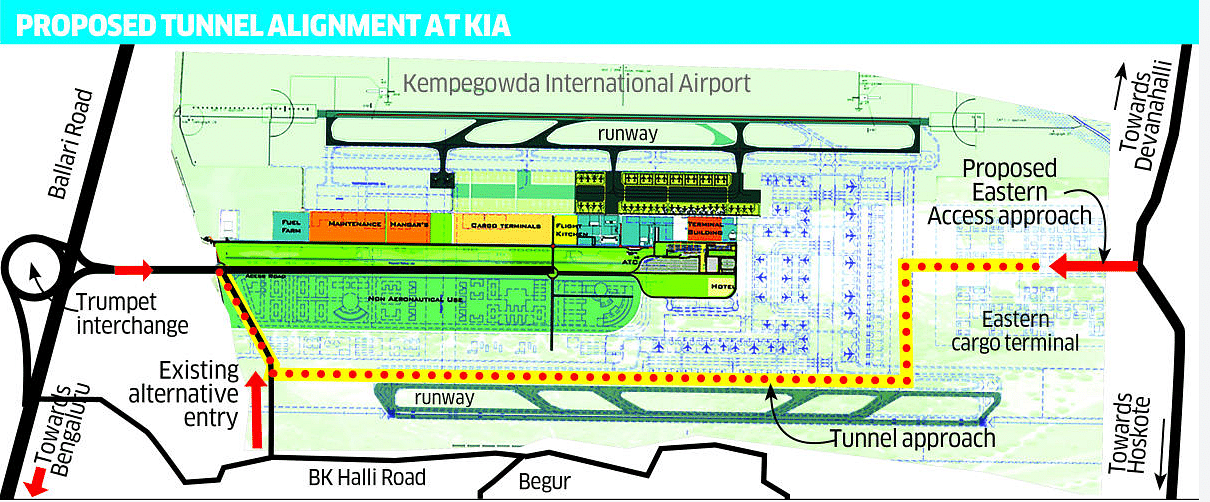A third entry to the Kempegowda International Airport (KIA) through a massive 2.76-km tunnel is now in the pipeline. The tunnel has been proposed to run underneath the second terminal apron and the east cross field taxiway that links the existing and second runways.
Based on a feasibility study, the Bangalore International Airport Limited (BIAL) has proposed that the project, dubbed as the Eastern Tunnel Access road will make the airport more easily accessible for the Eastern part of Bengaluru city. The proposal has been placed before the Airports Economic Regulatory Authority of India (AERA).
The Eastern tunnel is to be built in two phases. Under Phase 1, a 300-metre stretch of the tunnel below the cross field taxiway will be completed by June 2019 at a cost of Rs 88 crore. The second phase will see the construction of the tunnel’s remaining part at an estimated cost of Rs 1,033 crore (at 2017 price levels). The construction schedule has been tentatively planned from June 2021 to June 2023.
To minimise costs, BIAL has proposed to build the structure in an ‘open-cut-and-cover environment.’ Implication: The tunnel work will have to be completed before the T2 apron’s works start. Based on current traffic growth, the T2 apron project is expected to be executed from June 2021 to March 2024.
Once completed, the Eastern tunnel will be linked to the Eastern Connectivity Road that heads to the proposed Maintenance, Repair, Overhaul (MRO) / Cargo facilities on the airport’s Eastern side. This road is now under construction by the State Public Works Department.
Tunnel specifications
The tunnel, with a total length of 2,760 metres, will have approach ramps of 175 metres on its either ends. The design presented to AERA shows the tunnel height to be 5.5 metres as per Indian Road Congress specifications, with four traffic lanes divided by a central section for tunnel utilities. Walkways on either side of the traffic lanes are also part of the design.
Since its commercial launch in May 2008, the airport had a single external access through the Trumpet interchange on the Airport Road. As this was of a serious security concern, BIAL had explored an alternative entry. The second entry point was launched in March this year. But a third access point was considered necessary to address the traffic challenges posed by the second terminal and the projected passenger traffic of 65 million.
